The Best RV Security Systems in 2025
Our top choice, ADT Self Setup, comes with reliable equipment and access to ADT SoSecure app’s features like roadside assistance and automatic crash detection to protect your home away from home.
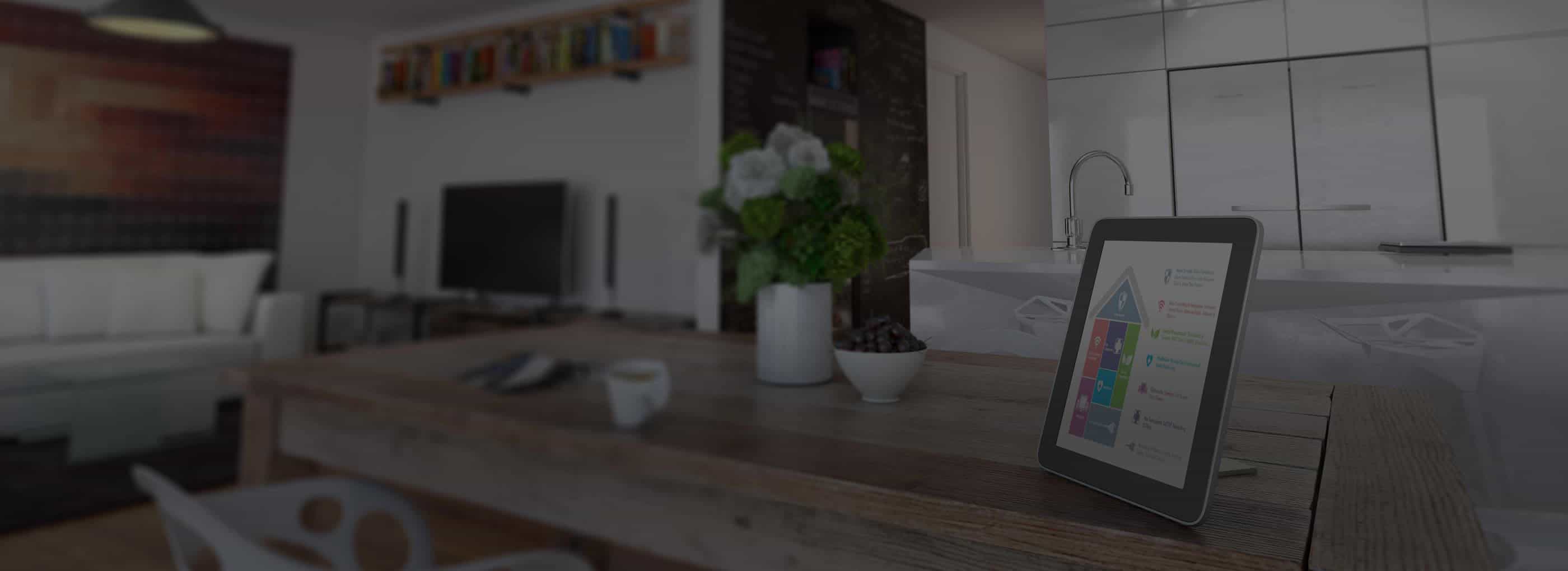
SafeHome.org may receive compensation from some providers listed on this page. Learn More
We may receive compensation from some providers listed on this page. Learn More
Our top choice, ADT Self Setup, comes with reliable equipment and access to ADT SoSecure app’s features like roadside assistance and automatic crash detection to protect your home away from home.


ADT Self Setup features equipment from the popular Google Nest range that you can install yourself. Throw in access to the ADT SoSecure app, and you have everything you need to keep you safe on the road.

SimpliSafe’s low-cost, DIY security system makes it perfect for homes and recreational vehicles. You can have your system up and running in less than an hour. Plus, you’ll save money with a self-monitoring plan so you can grab more road snacks.

Cove equipment is affordable and easy to install. You can also count on your RV security system to stay online wherever there is a cellular signal and be operational for up to 24 hours without a power source.
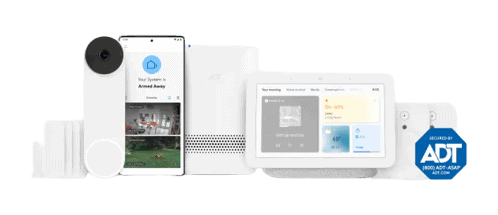
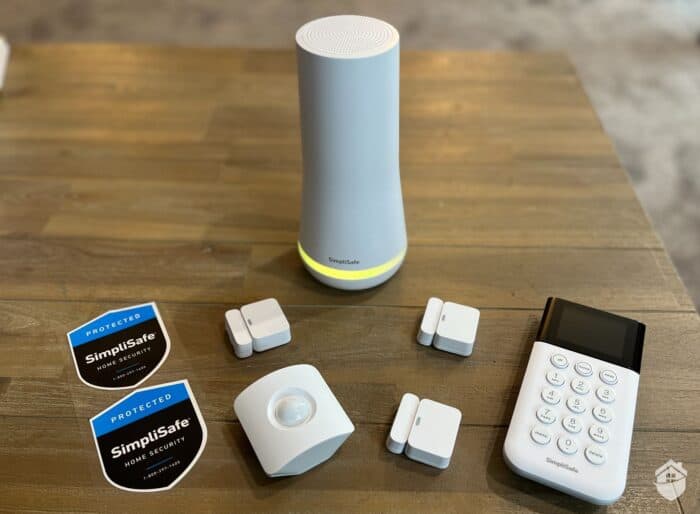
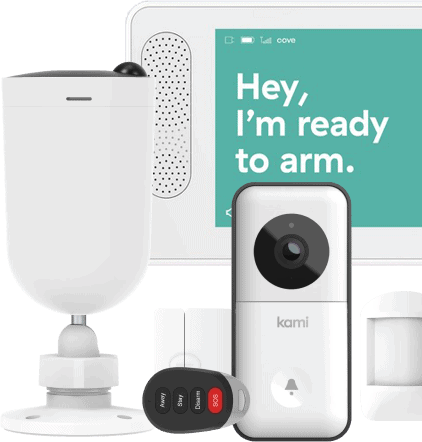
Want to beef up your RV's security? Sure, your RV might come with an alarm that blares when someone tries to open a door or break a window. But if you want to take your security to the next level, you’ll want to add cameras, glass break sensors, and motion detectors.
The good news is that some of the best home security systems are also suitable for RVs. Our top pick, ADT Self Setup, even gives you access to features that can benefit you while cruising down the highway. But SimpliSafe and Cove are also great alternatives if you’re looking for self-monitoring options or affordable, reliable equipment. Let’s take a look at each security system to see which one you should hitch to your RV.
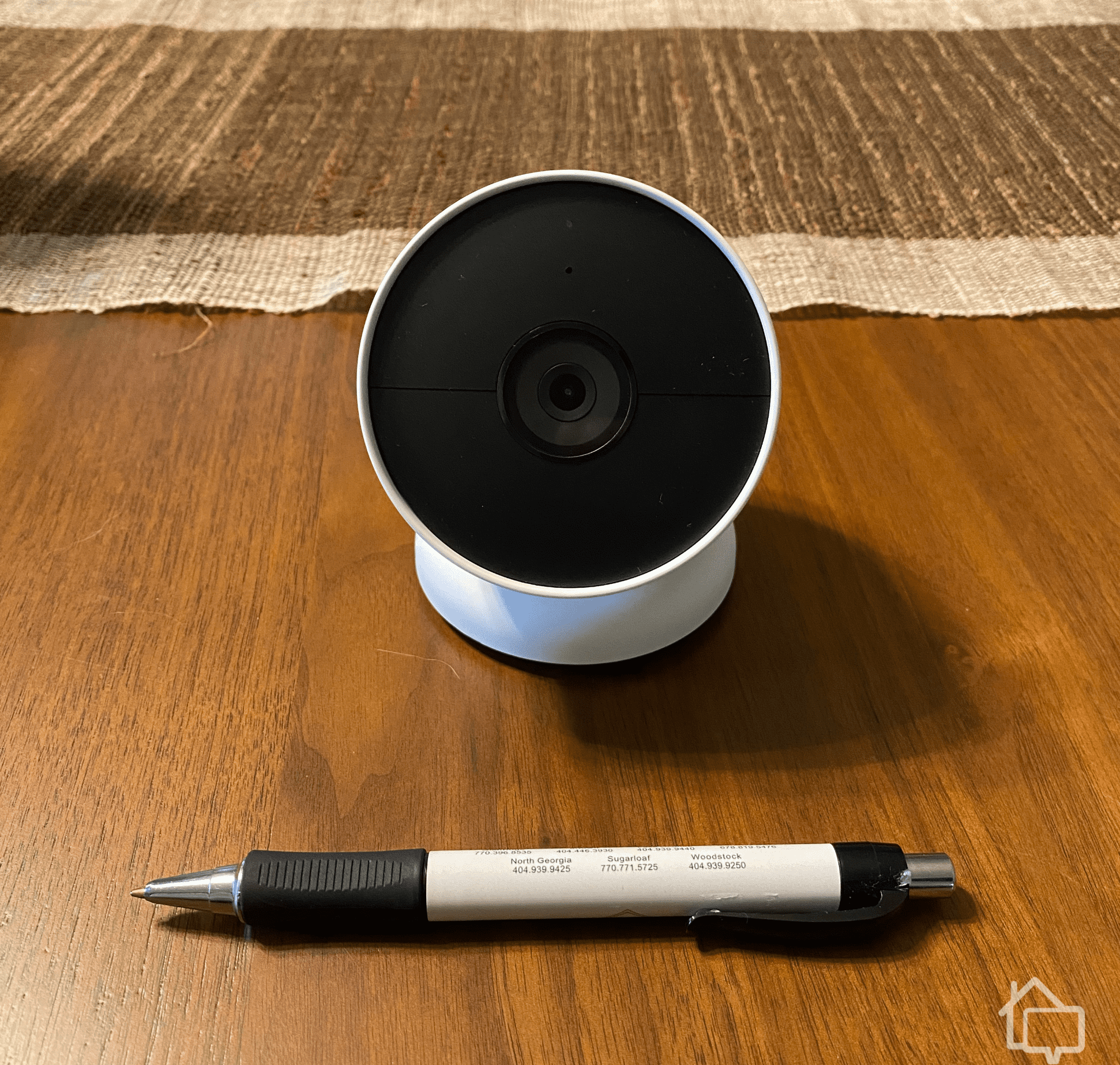
The Google Nest Cams that come with ADT Self Setup are the perfect size for an RV.
In our experience, the best way to give you trustworthy security system recommendations is by testing the equipment ourselves. To do that, we buy all the products ourselves, set them up in our homes, and live with them for weeks or months at a time. Through this rigorous approach, we can thoroughly compare the devices, assess the quality of the service, and evaluate how well they provide protection.
There are multiple factors that can affect the testing of security systems, so we look for ways to level the playing field. While we didn’t test these setups in an RV, we set them up in our home and took note of specific traits relevant to recreational vehicles, such as durability in weather conditions and the size of the equipment.
We’ve always found that testing equipment in homes instead of labs yields the most accurate result. All systems were installed in roughly the same locations to compare their performance. Here’s what our setup looks like:
We drew upon our security expertise to choose the most vital factors for RV security systems. These are the criteria we believe are the top priority:
After assessing our top picks, here’s how we rated them:
Rating the Best RV Security Systems
We’re not like other review sites that test everything from laptops to doormats. Our team of experts only focus on home security and personal safety topics. They are dedicated to rigorously reviewing and assessing home security systems. The people behind this guide include:
We are the most experienced home security team on the internet. Our people have been testing security systems since 2016, and our work has been in The New York Times, The Washington Post and dozens of other major outlets. Collectively, our experts bring to the table
Every recommendation is based on first-hand product experience and a deep understanding of the home security industry. Now, let’s take a look at the best security systems for RVs in 2025.
| System |
ADT

|
SimpliSafe

|
Cove Security

|
|---|---|---|---|
| Ranking |
1st

|
2nd

|
3rd

|
| SecureScore™ | 9.2 | 9.3 | 8.8 |
| Best For | Full-Time Travelers | DIY Installation and Monitoring | Budget-Friendly System |
| Installation | DIY | DIY or Professional | DIY or Professional |
| Monitoring | Self-monitoring or Professional | Self-monitoring or Professional | Self-monitoring or Professional |
| Warranty | 1 Year | 1 Year | 1 Year |
| Review | ADT Self Setup Review | SimpliSafe Review | Cove Review |

Gone are the days when the only way to get an ADT security system was to call and book an appointment for a technician to install it. Today, you can buy all the necessary equipment from the website and set up your security system yourself in about an hour.But these aren’t the only reasons you’re reading about ADT Self Setup first. Once you become an ADT customer, you get access to ADTSoSecure, which acts like a panic button for ADT’s first-class monitoring service, as well as nominated friends and family members. You can even pay as little as $10 a month for a premium plan that comes with automatic crash detection and roadside assistance. That can come in handy when you take your RV on the road.
Whether you’re traveling through Arizona’s driest parts or visiting New Orleans during the wet season, ADT Self Setup’s equipment will stay online and watch over your RV. These durable devices come from ADT and the Google Nest range and are built to last.
The Google Nest Cams are the highlight for us. We tested the Nest Cam indoor and outdoor models, which feature batteries capable of lasting up to seven months on a single charge. We also grabbed ADT’s patented motion detectors, glass break sensor, and smoke and carbon monoxide alarm. All have sleek, slim designs so they don’t take up a lot of space in the RV or look out of place.
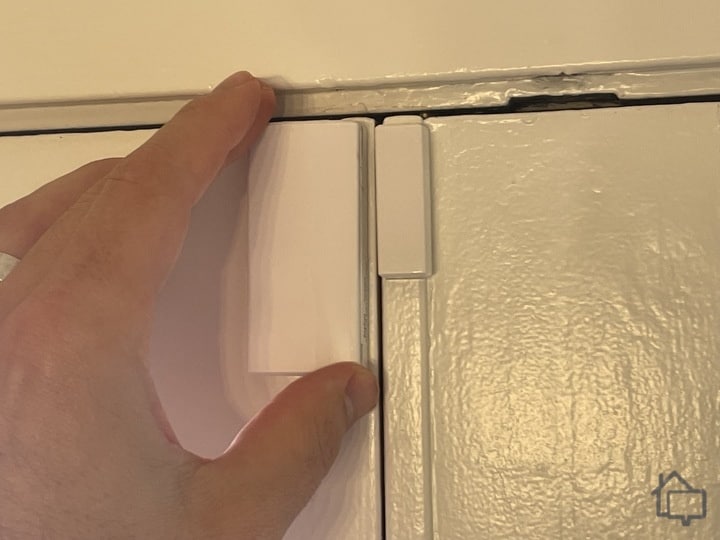
ADT Self Setup sensors blend in with the decor … as long as it’s white.
ADT’s Build Your Own system starts from $269. This package comes with a base that controls all aspects of the system and a door/window sensor. You can add as many devices as you need, and this will naturally increase the price. For example, a Google Nest Cam (outdoor or indoor, battery) is $179.99, and the ADT Motion Detector is $40.
Another great thing about ADT Self Setup as compared to the professionally installed ADT system is that you’re not required to sign up for professional monitoring. You can self-monitor it, which is actually what’s most ideal if you spend a lot of time living in your RV. Since (we assume) you’re on the road all the time, a typical professional monitoring setup won’t work. ADT won’t know where to send help in case of an alarm. But with self-monitoring, alerts are funneled only to your smartphone, and from there, you can dial 911 if needed and you’ll be connected to the nearest dispatch station. The kicker? Self-monitoring ADT Self Setup is free. It’s one of the best self-monitored systems we’ve tested.
Pro Tip: One downside of self-monitoring ADT is you won’t have video recording capabilities. A work-around is to register your Nest Cams from ADT to Nest Aware. It’s only $8 per month or $80 a year. You’ll get 30 days of event video history and smart alerts for other Nest equipment.
The ADT Self Setup equipment we bought was peel and stick, so you won’t need to drill any holes into the RV to install them; we certainly didn’t when we installed ADT Self Setup at home. We also found it easy to move the Nest Cams to new spots if we wanted it to record from a different angle. It’s one of the reasons why ADT Self Setup is at the top of this list.
Another reason is the ADT SoSecure smartphone app. It’s available for free as a panic button whenever you need emergency assistance. If you initiate an SOS, someone from ADT’s monitoring center will call or text to check in on you.
FYI: ADT’s professional monitoring service is the best in the industry. ADT has 12 monitoring centers across the U.S. and Canada, so you’ll never have to wait too long for someone to help you.
ADT SoSecure has a premium plan for $9.99 per month or $99.99 a year. Some other extra features beneficial for RV travelers are:
If you’re on the road full-time, these features can be invaluable. Especially if you don’t have this type of coverage with an insurance company.
| Connectivity | Wi-Fi |
|---|---|
| Power | Wired and battery |
| Field of View | Up to 135º |
| Resolution | 1080p |
| Storage | Limited local, cloud included |
| Smart Platform Compatibility | Alexa and Google Home |

SimpliSafe pioneered self-monitoring back in 2006 and continues to be the standard-bearer for other DIY monitoring companies like abode and Ring. There’s no charge for self-monitoring, and you can still access livestreaming and receive instant alerts when an alarm is triggered. You can even pay $9.99 for self-monitoring with unlimited cloud storage for up to 10 cameras.The equipment is also effortless to install. It took us less than 30 minutes to set everything up. Like ADT Self Setup, SimpliSafe security systems are customizable. The only mandatory devices are the base station and keypad.
We chose the equivalent security equipment to our ADT Self Setup system to compare apples to apples. We liked the SimpliSafe hub better than the ADT Self Setup hub. SimpliSafe’s hub has a nicer look and a soft glow when it’s online, whereas ADT’s base station is a sticky cylinder that’s handy for storage but could also be confused for a portable air purifier.
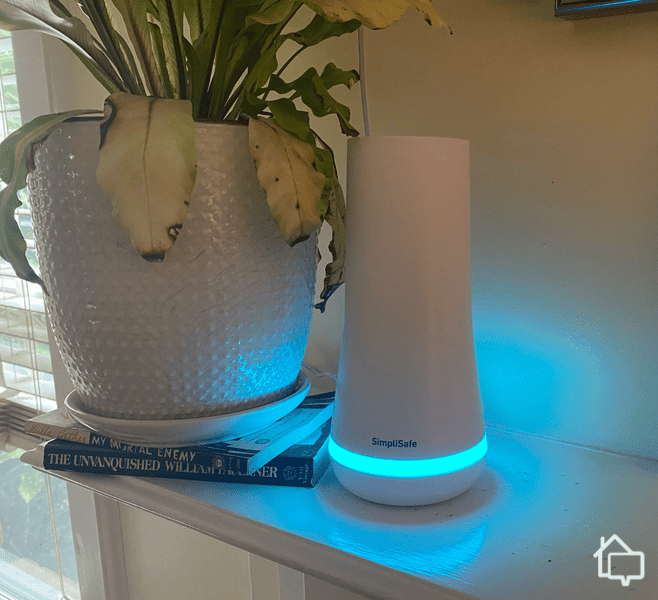
The SimpliSafe base station looks more decorative than other hubs we’ve tested.
As for the rest of the equipment, while they were easy to set up, they are also slightly larger in size compared to ADT’s product range. Unfortunately, the security camera range is also limited. There are only two indoor cameras to pick from, a wireless and wired option, and one type of outdoor camera. The rechargeable battery only lasts for three months as well.
SimpliSafe has a range of affordable premade packages that start from $250. But we recommend building your own security system from scratch so it’s customized to your RV. It will probably end up cheaper, especially considering SimpliSafe seems to run deals throughout the year.
FYI: SimpliSafe’s Black Friday deals seem to get bigger every year. In 2024, SimpliSafe slashed prices by up to 70 percent and even threw in a free outdoor camera valued at $199.99.
But what separates SimpliSafe from ADT Self Setup is its approach to self-monitoring. While ADT’s camera recording subscription is packaged into the professional monitoring plan, SimpliSafe offers a self-monitoring plan that will allow up to 10 of your cameras to record to the cloud. You only need to pay $9.99 per month for this service. With self-monitoring, you’ll get alerts on your smartphone, the ability to livestream camera footage, and app controls for functions, such as arming and disarming the system.
Not only was SimpliSafe’s security system the easiest to install, but it was also the easiest to manage. We signed up for the Self-Monitoring with Camera Recordings plan because we set up an indoor and outdoor security camera. Any time a sensor or camera detected motion, we got a notification on our phone, and we could bring up a livestream to investigate further.
>> Learn More: SimpliSafe 2025 Packages & Pricing
It was handy that the outdoor camera had a spotlight to get a good view of the offender. Most of the time it was just an animal searching for food nearby. Once the spotlight hit it, the animal would take a second to look directly at the camera before scurrying away into the night. SimpliSafe made us feel we had total control over our system thanks to the self-monitoring plans. We also knew it would be easy to add more equipment in the future if we felt we needed to beef up our security system.
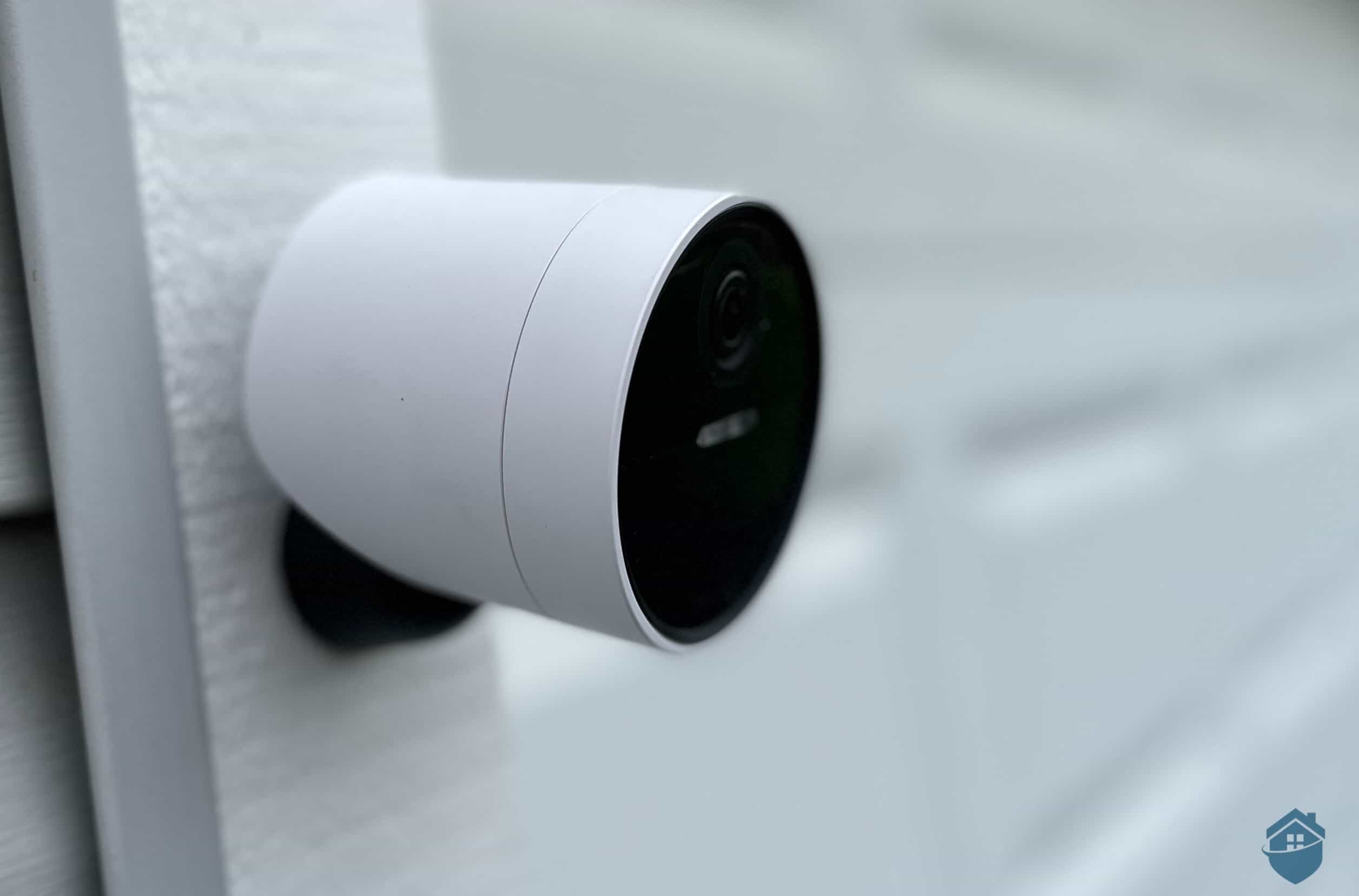
SimpliSafe’s Outdoor Camera has a motion-activated spotlight to scare away animals and intruders.
| Connectivity | Wi-Fi |
|---|---|
| Power | Wired and Wireless |
| Field of View | Up to 140° |
| Resolution | 1080p |
| Storage | Cloud |
| Smart Platform Compatibility | Alexa and Google Home |


So what if your RV budget has blown out because of mattress upgrades or installing solar panels? Thankfully, you can still get a good deal with a Cove security system. Cove runs sales so frequently throughout the year that we’ve never once paid full price when buying a new system for testing purposes.Like ADT Self Setup, you’ll need to pay for a full month of one of the Cove monitoring plans before activating the self-monitoring option. The other extra step you’ll need to take is calling Cove to subscribe. But the good news is the plans come with two-way audio communication, motion alerts, and access to up to seven days of recordings in the Cove app.
Cove recently upgraded a lot of its equipment. It’s still easy to install your devices, but they’re no longer big and bulky. The motion detectors and door sensors have shrunk significantly and should blend in perfectly with any recreational vehicle.
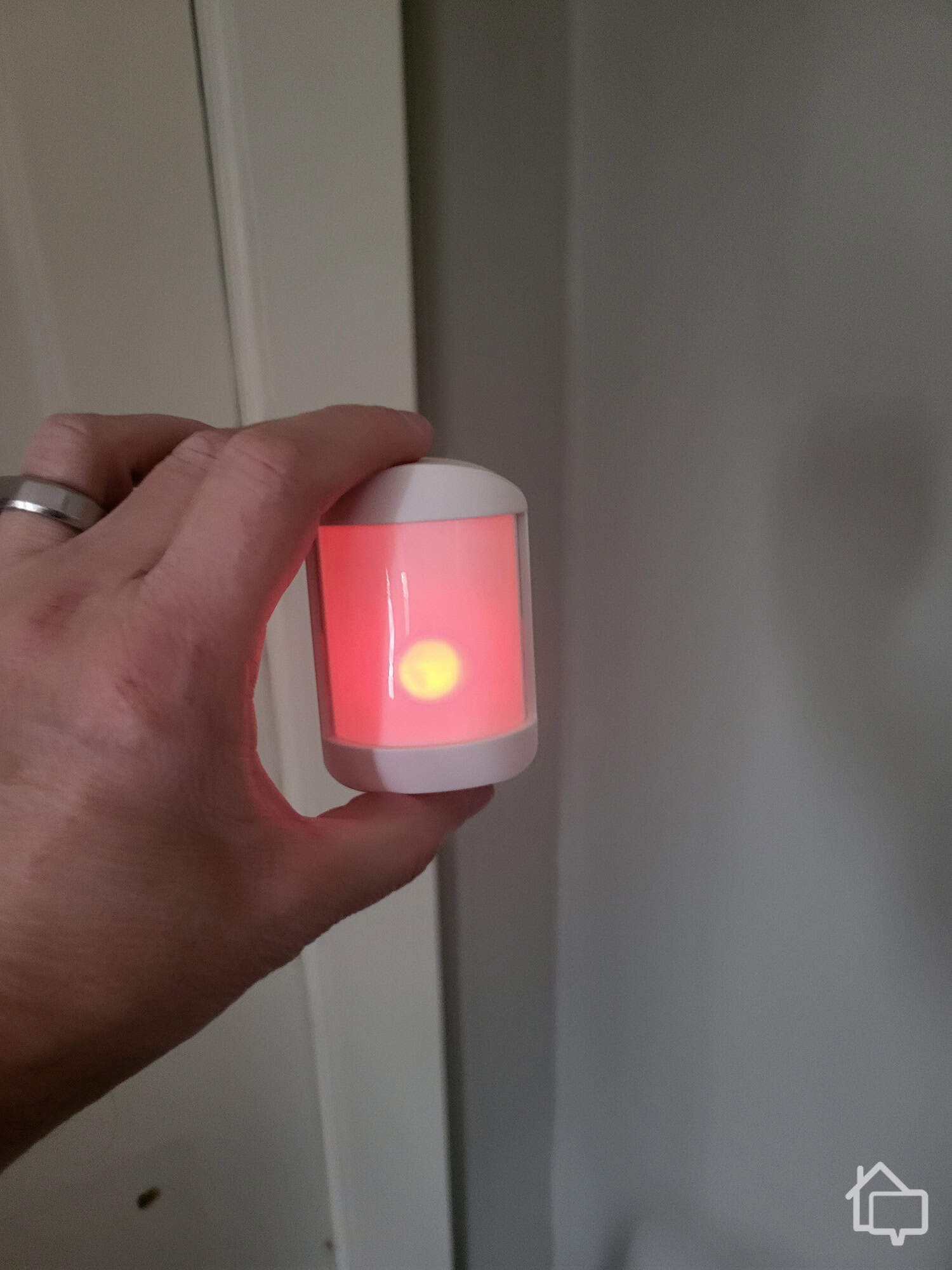
Cove’s new motion sensors are smaller but will shine bright red when they detect movement.
The indoor and outdoor cameras also look more modern. These devices are built by Eufy. We’ve tested Eufy’s security system and can vouch they build reliable security hardware. The outdoor camera does require a mount to be screwed into the surface, but it’s powered by solar and has a backup battery. It can also store video footage locally, which helps you save on cloud storage fees.
As we mentioned earlier, you’ll need to pay for at least one month of professional monitoring with Cove before switching to the self-monitoring plan. Here’s what’s included in each package.
| Features | Self-Monitoring with Camera Recording | Cove Basic | Cove Plus |
|---|---|---|---|
| 24/7 alarm and environmental monitoring | No | Yes | Yes |
| Cellular backup | Yes | Yes | Yes |
| Smartphone control | Yes | Yes | Yes |
| Camera support | Yes | No | Yes |
| Price | $9.99 per month | $19.99 per month | $29.99 per month |
While we’re happy we can self-monitor our security system, we still prefer SimpliSafe’s self-monitoring plan over Cove’s. The main reason is you’ll need to open a second app to access camera recordings – Eufy’s app to be precise. Plus with SimpliSafe you don’t need to waste money paying for a month of professional monitoring that you won’t use.
FYI: Both Cove cameras can store footage locally. But if you want cloud storage, you’ll need to pay $2.99 per month per camera. This will give you 30 days of cloud storage.
We were able to buy the equivalent Cove equipment we purchased from ADT and SimpliSafe. As all the devices came synced, the only labor we had to do was peel an adhesive and stick the items to the surfaces. The indoor camera does require a power source, but the outdoor camera is solar-powered, so it can stay charged all day long.
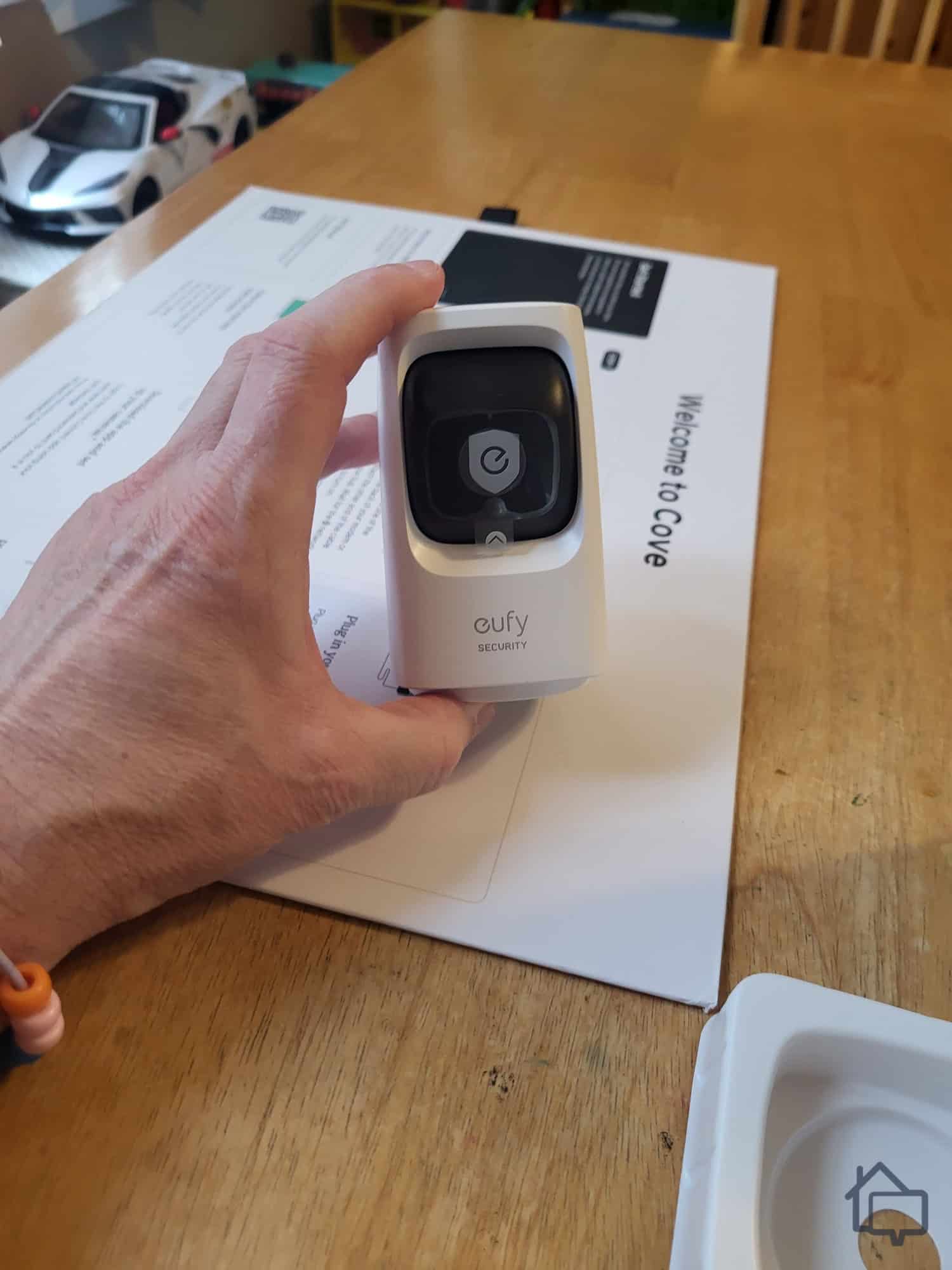
Cove’s Indoor camera is tiny, but it can pan and tilt to cover the entire living area of an RV.
The outdoor camera also has a 75 dB siren to scare off potential intruders. It gave us a fright the first time we heard it blaring but not as much as the deer it scared back into the woods. Thankfully, the AI detection in the cameras works on smaller critters. So we didn’t get any alerts whenever it spotted a squirrel or bird.
| Monitoring options | Professional or DIY |
|---|---|
| Installation | Professional or DIY |
| Smart platform integration | Alexa and Google Home |
| Equipment cost | From $300 for hub and keypad |
| Monthly monitoring cost | From $19.99 |
| Contract length | Monthly |
ADT Self Setup, SimpliSafe and Cove are the security systems we recommend for RV owners. But they are not the only setups suitable for recreational vehicles. If you’re looking for other alternatives, here are two that almost made the list.
If you’re anything like us, you’ve accumulated a bunch of smart devices over the years and are forced to manage them with their native apps. abode eases that pain by letting you Zigbee and Z-Wave smart locks, lights, appliances, and more in one convenient place. When we reviewed abode, we used the app to set up schedules so we never forget to lock the door or arm our system.
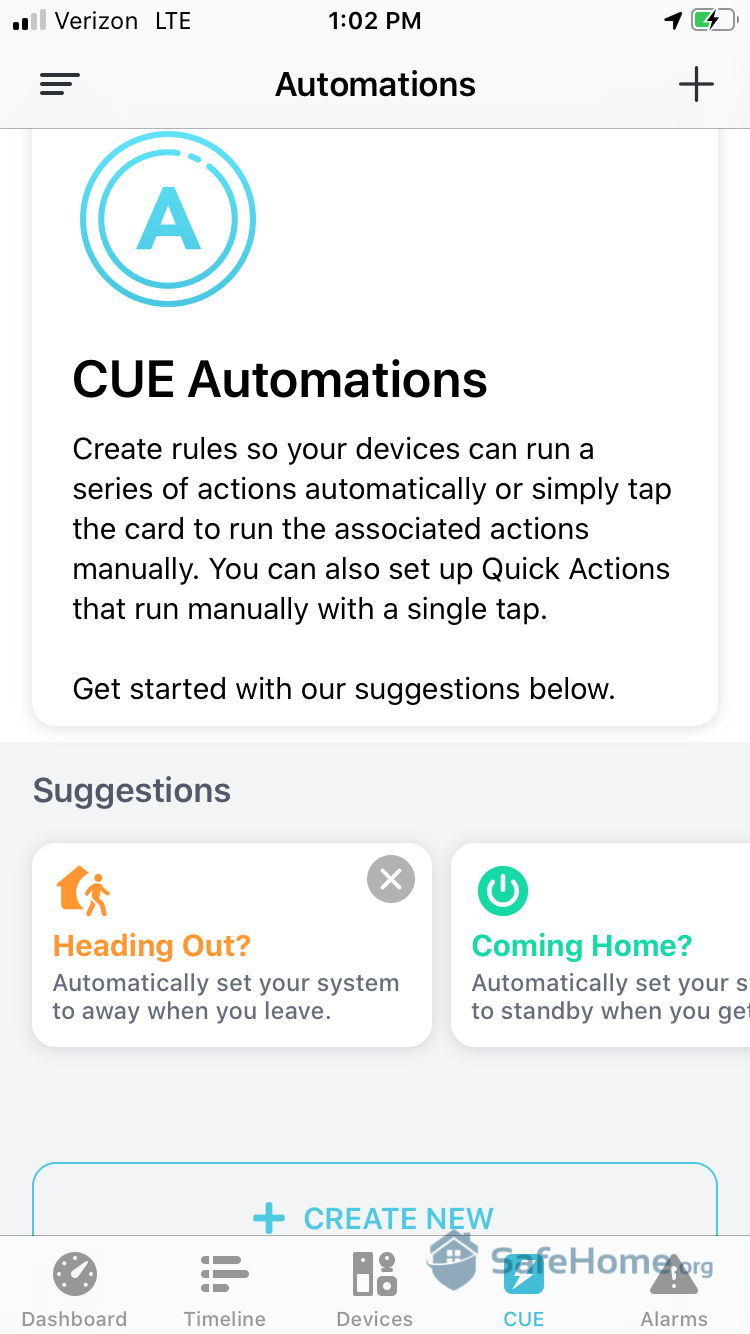
We set up several automations using the intuitive abode app.
We set up several automations using the intuitive abode app.
What holds abode back is the price and shape of some equipment. For example, a motion sensor is $55 and takes up a lot of room in the corners of the RV. While the abode Cam 2 is just $59.99, it requires a power source to work indoors or outdoors, which can limit its placement. At least abode has a free self-monitoring that makes up for the expensive equipment.
>> Keep Reading: abode Security System Cost and Pricing
Ring’s security system looks like it would be perfect for RVs. You can buy equipment with different power sources, such as batteries or solar. There is also a category titled Ring Jobsite Security featuring devices exclusively built to last in the great outdoors.
>> Check Out: Ring Alarm Security System Cost and Pricing
The only issue is that the equipment range is limited compared to our top picks. You might not find everything you need to keep your RV safe. But Ring does have a free self-monitoring plan for motion alerts. However, it doesn’t include cloud storage. You’ll need to sign up for the Basic ($4.99 per month) or Standard ($9.99 per month) plan for this feature.
FYI: Ring’s Basic plan only covers one camera. If you want to save footage from multiple Ring cameras, you’ll need the Standard plan. Both include up to 180 days of video event history.
Recreational vehicles aren’t cheap. No matter how big or small your RV is, it’s a valuable piece of equipment, and it deserves protection, as do the belongings inside it. Installing a security system can alert you to potential threats and act as a deterrent to anyone loitering around your RV. It’s also useful for:
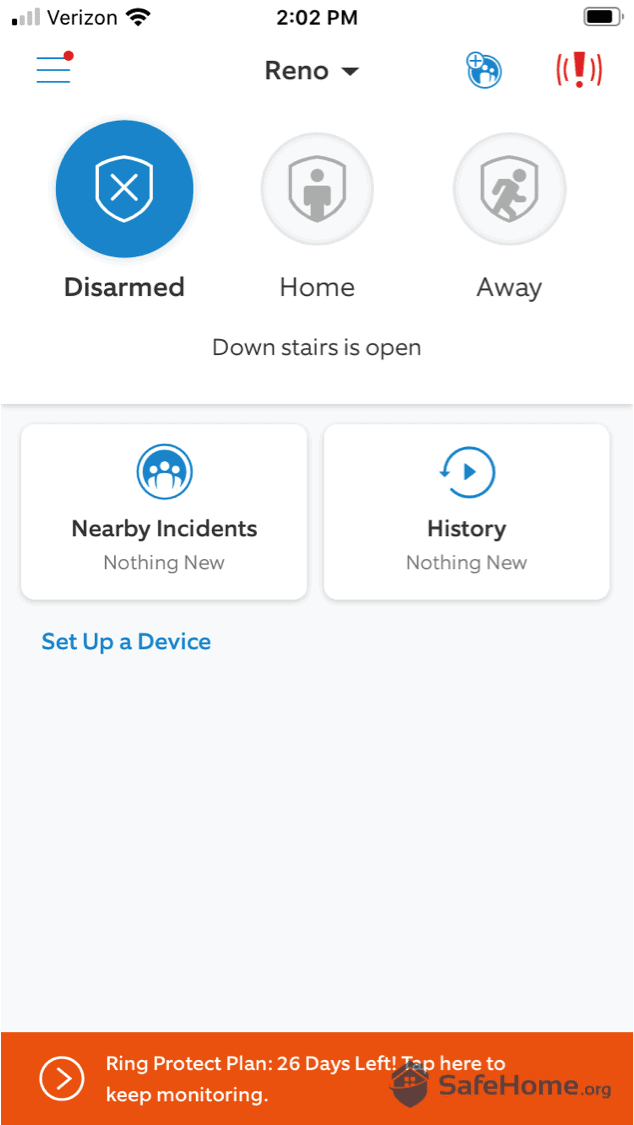
Managing a security system is easier with a smartphone app.
Before you start choosing your security system equipment, you should consider what your RV needs first for the setup to be operational. For example, if your devices need a power source, you’ll have to think about batteries or AC power supplies. In fact, while most sensors from the security systems we recommend are battery-powered, they all require a base station that plugs into an AC power supply. They have battery backup, but base stations don’t typically last more than 24 hours on just batteries.
Most security systems require an internet connection to stay online as well, so we recommend signing up for satellite internet like Starlink, which has plans specifically for RVs.
Much like battery backup, our top-pick security systems for RVs include cellular backup as well. This technology would allow the system to communicate in case of a failed internet connection. However, they are not designed to run on cellular connection alone; you’d need a working internet connection to set them up in the first place. It’s great if your RV security system has cellular backup, which is one of the things we considered when writing this list. Still, a satellite internet connection is necessary.
>> Related: The Best Cellular Security Systems of 2025
FYI: When choosing security systems to recommend to RV owners, one of the main things we looked for is the ability to work when power or the internet is out. ADT Self Setup, SimpliSafe and Cove all have that.
The last thing you want to do is install an RV security system and realize you’ve forgotten a crucial component. To keep you on track, use this checklist to make sure you’ve got everything you need before you hit the road.
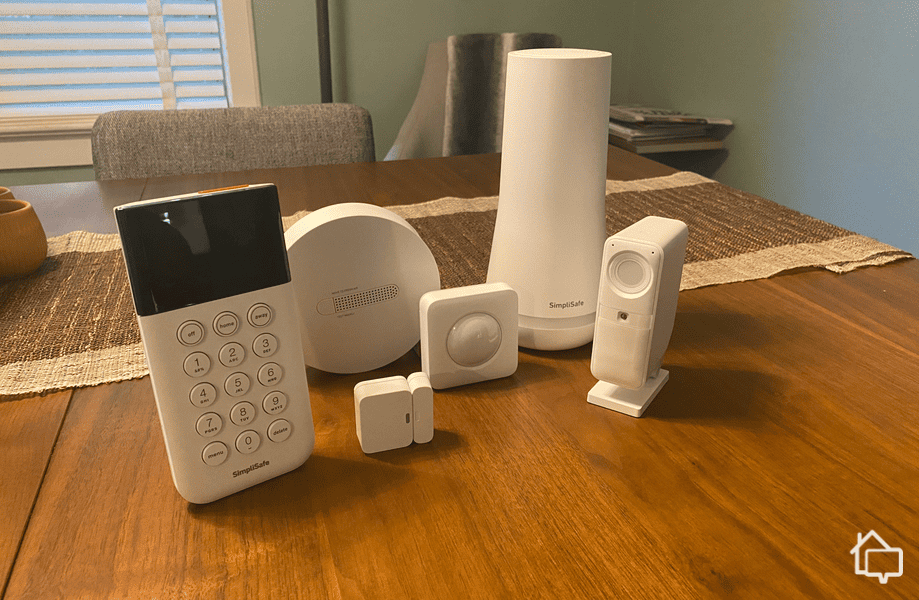
A simple security system from SimpliSafe.
An RV security system should be one component of your safety plan while you’re traveling. Here are some other tips we’ve picked from fellow travelers and other RV enthusiasts.
You should feel safe whether you’re in the comfort of your home or vacationing in an RV. You’re still traveling with valuables and in a vehicle that doubles as a shelter. So, installing a security system makes sense to protect your investment and contents.
The type of equipment you need will depend on your RV. That’s why we recommend choosing a security system from ADT Self Setup, SimpliSafe or Cove so you can customize your setup to suit your recreational vehicle. Combine the security system with a powerful app and a working self-monitoring plan, and you’ve got everything you need to help you relax no matter where you’re traveling.
ADT Self Setup is the best RV security system. The Google Nest equipment is reliable and durable. It’s also easy to install and move equipment if you need the cameras to record at different angles.
You can install most basic security equipment inside an RV. We recommend choosing a security system as it means you can control and monitor the whole setup from a smartphone rather than relying on multiple apps for different devices.
Some security systems function as local alarms, sounding a siren if a break-in is detected. Most such systems don’t require an internet connection. However, our top picks are designed to communicate alerts with you no matter where you are, and these systems require a reliable internet connection. Should your RV’s internet connection fail, though, they can also use cellular networks as backup.
We recommend installing motion detectors, window and door sensors, door locks, and security cameras. Other devices — like smoke and CO2 detectors or glass break sensors — can also be useful for RV security systems.
It is difficult to use professional monitoring while traveling in an RV as you’re required to report your location, which can change often. We recommend self-monitoring plans that can include features like livestreaming and real-time notifications to keep you informed when an alarm is triggered.